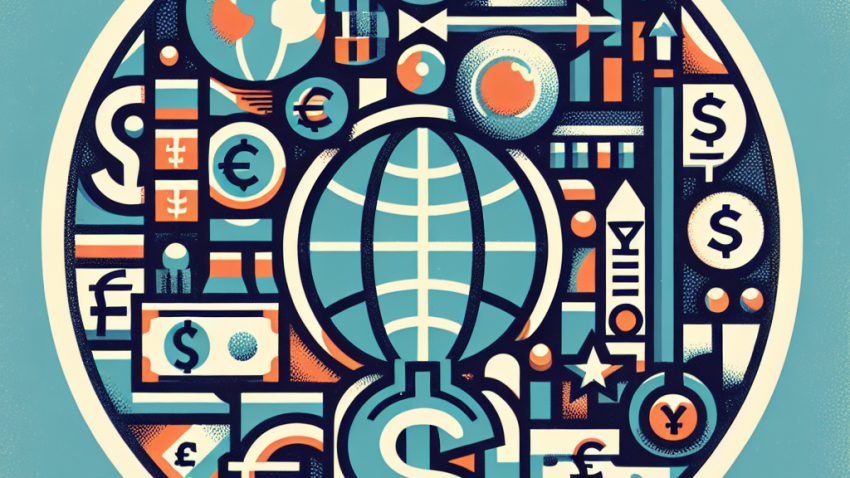
Are We Heading Towards Currency Bloc Fragmentation in Global Trade?
A Burgeoning BRICS Bloc: Redrawing the Global Economic Power Map
Once a mere acronym coined by an economist with a flair for catchy phrases, BRICS — the economic coalition of Brazil, Russia, India, China, and South Africa — has in recent years undergone a renaissance of relevance. Once underestimated in the hallowed halls of Western financial institutions, BRICS is now commanding attention, not through posturing, but through palpable shifts in global trade, currency arrangements, and macroeconomic influence.
As we unravel this geo-economic tapestry, let me — Dr. Alistair P. Whitmore, professor emeritus of International Political Economy and your ever-curious narrator — guide you through the nuances of this increasingly potent bloc. Prepare for a journey that melds macroeconomic analysis with the ironies of modern geopolitics, all in impeccable detail and dry British humor, naturally.
Setting the BRICS Foundation: A Decade of Dormancy or Strategic Patience?
To appreciate the current momentum, one must understand the hibernation phase. For over a decade, BRICS meetings were often described as photo ops with pretenses of relevance. But behind the diplomatic platitudes, a shared frustration simmered — a frustration with a dollar-dominated financial order increasingly seen as skewed toward Western hegemony.
The global financial crisis of 2008 served as an inflection point. The West’s credibility eroded with each bazooka of quantitative easing unleashed by central banks. Meanwhile, BRICS nations survived the turbulence through robust domestic demand and heterodox policies — albeit with mixed success. Still, it laid the groundwork for the convergence we now witness.
Economic Scale and Substance: By the Numbers
As of 2023, the original BRICS economies collectively account for more than 30% of global GDP in terms of purchasing power parity — a not-so-trivial statistic that unsettles the G7 orthodoxy. China and India alone comprise over 2.8 billion people, forming a demographic and consumer market juggernaut. Russia, despite sanctions, remains energy-rich and strategically pivotal. Brazil and South Africa bolster the bloc’s claim to regional representation across the Global South.
- China: World’s second-largest economy; dominant in global manufacturing and rare earths.
- India: Fastest-growing major economy; strong services sector and fintech innovation.
- Russia: Major energy exporter; key player in global commodity markets.
- Brazil: Agricultural powerhouse; vital to global food security.
- South Africa: Mineral-rich; gateway to African markets.
The Expansion Agenda: BRICS+ and the Geopolitical Undertones
The most sensational development, to use the tabloids’ parlance, is the proposed BRICS expansion — informally dubbed “BRICS+.” More than 20 countries, including Saudi Arabia, Iran, Argentina, and Indonesia, have expressed interest. That’s not mere curiosity; it’s a signal of alignment, or at the very least, disenchantment with the post-Bretton Woods order.
Notably, the inclusion of oil-producing nations could build a critical mass capable of challenging the petrodollar regime. The implications? Let’s just say, mon dieu, American policymakers are quite right to pay attention.
De-Dollarization: Ambitions and Obstacles
Whether motivated by ideology, strategic autonomy, or tedious bureaucracy, BRICS nations have accelerated moves towards de-dollarization. Trade settlements in local currencies are gaining traction, exemplified by Russia-India arms deals in rupees, and Beijing’s yuan settlement mechanisms with several partners.
Potential Benefits of BRICS Currency Realignment:
- Reduced exposure to U.S. monetary policy vagaries.
- Enhanced bilateral trade fluidity.
- Shielding from Western sanctions (a major driver for Moscow, naturally).
Yet, the obstacles are formidable. Trust, transparency, and convertibility remain Achilles’ heels. There is no single BRICS central bank, no harmonized monetary framework, and, alas, no mutual crisis lender of last resort.
Rumors of a “BRICS common currency” may titillate headlines, but from a macro-financial engineering standpoint, it’s far-fetched without deep institutional scaffolding — think the EU’s path to the euro, but with even more dragons to slay.
Geostrategic Implications: The West’s Gentle Panic
The Western response oscillates between public nonchalance and private alarm. Washington’s officials tend to downplay BRICS’ coherence, while behind closed doors, think tanks and intelligence agencies regularly game the bloc’s trajectory.
To wit, BRICS allows nations under Western pressure to hedge. Sanctioned economies like Iran and Venezuela increasingly view BRICS as a diplomatic oxygen tank. Even states with “friendly” ties to the U.S., such as the UAE and Egypt, have flirted with BRICS+ as a strategic insurance policy.
Financial Instruments and Institutions: Not Just Chatter
The formation of the New Development Bank (NDB), headquartered in Shanghai, is the most tangible BRICS initiative yet. It offers project financing without the (often) neoliberal conditionalities of the IMF or World Bank. With partnerships in local currencies and green infrastructure loans, the NDB is gaining quiet credibility.
Equally noteworthy is the Contingent Reserve Arrangement (CRA) — a $100 billion liquidity pool aimed at currency stabilization among BRICS members. While still modest compared to the IMF’s purse, it’s an embryonic step toward financial independence.
The Road Ahead: Scenarios to Consider
So, what comes next? Let’s indulge in some speculative (though evidence-based) forecasting:
- Moderate Coherence: BRICS grows incrementally, focusing on pragmatic trade and finance initiatives without challenging Western institutions head-on.
- Geo-Economic Revolution: A genuine alternative financial system emerges, led by BRICS+ with partial digital currency integration and multilateral funds in local tender.
- Fragmentation Risks: Sino-Indian rivalry or regional disparities corrode trust, leaving BRICS as a nominal grouping with diminished leverage.
Given the heterogeneity of its members, outcome #1 remains most likely — but do keep your monocles ready for surprises.
Final Thoughts from the Ivory Tower
As a keen observer of international monetary systems and a sufferer of endlessly long acronyms (IMF, WTO, OBR, et cetera), allow me a closing remark: BRICS may not yet be a revolution, but it is most definitely a revelation. In a world beset by multipolarity, the days of unipolar economic governance are receding as fast as Twitter’s reputation.
If you’re a policymaker, investor, or simply a globally curious soul, ignore BRICS at your peril. The tectonic plates of macroeconomics are shifting — and our hallowed Western institutions are no longer the only architects of the rules of global finance.
To learn more about our editorial values, visit our About Us page. Questions or media inquiries? Reach us via our Contact Page.









Leave a Reply